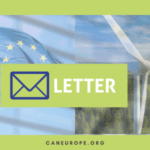
Today’s proposals are loosening the noose on highly-indebted Member States, which is necessary to avoid imminent cuts in public spending on climate action, energy transition, health or education. However, it is a missed opportunity to move away from an economic model which causes climate change and generates unacceptable socio-economic inequality.
The mix of carrots and sticks proposed by the European Commission is welcome: Member States will have more time to reduce their public debt (the carrot) if they pledge to implement investments and reforms able to make their economies healthier over a multi-year timeframe. If they do not achieve the results promised with these investments and reforms, they will face sanctions (the stick).
But which investments and reforms could justify more fiscal space for Member States? That is where the shoe pinches! In today’s Communication, the European Commission proposes several criteria, in particular whether the investments and reforms must be growth-enhancing; address common EU priorities such as the National Energy and Climate Plans (NECPs) and the European Pillar of Social Rights; contribute to implement the Country-Specific Recommendations ; are timebound, detailed and verifiable; and don’t lead to investment cuts in other areas. For CAN Europe, this is a step in the right direction, giving much more attention to the quality of public spending, i.e. what are we spending for. The fact that the common EU priorities mentioned by the Commission explicitly include the NECPs and the European Pillar of Social Rights was a must – but not a given when discussions about the reform of the EU fiscal rules started two and a half years ago. This is therefore definitely a win!
Indeed, the existing EU fiscal rules only look at the level of debt and deficit compared to GDP – i.e. the quantity and not the quality of public spending, based on unsubstantiated percentages representing EU countries average debt thirty years ago. They consequently encourage indiscriminate GDP growth, i.e. ever-growing consumption and production regardless of the environmental impact, which is not compatible with planetary boundaries. Unfortunately, the references to GDP growth – even if garnered with the adjectives “inclusive” and “sustainable” – remain legion in today’s Communication, and there is a huge risk that this criteria beats all the others when assessing investments and reforms proposed by Member States to justify a slower reduction pathway for their debt.
In CAN Europe, we consider that investments and reforms justifying a longer debt reduction pathway need to support a green and just transition, and should do no significant harm to climate or the environment. Reforms proposed should include effective action against corruption and a rapid termination of fossil fuel subsidies – misusing public funds should not be an option. The new EU economic governance should also encourage Member States to tax wealth and pollution (progressive carbon taxes), as resources generated will help to reduce their debt and deficit, as well as inequality. This would strengthen the resilience of our economies and societies by accelerating climate action and supporting people in the transition. The Commission’s orientations do not include any reference to these crucial founding blocks of any just transition, thereby perpetuating business as usual in terms of our economic model.
Huge debts and deficits may have spillover effects on the economy of other Member States – therefore the need for common fiscal rules. But today’s energy crisis shows that insufficient spending in renewable energy by several Member States is also having a spillover effect on the whole European economy, making Europe dependent on expensive and damaging fossil fuels. In addition, climate change goes with more frequent and intense extreme weather events which have an impact on public finances and the economy. The Orientations mention – between brackets! – that the cost of natural disasters should be anticipated in national budgets. It is therefore wise that the Commission proposes that emerging challenges such as climate change, environment and energy transition, and their link to macroeconomic imbalances where relevant, will be covered in the context of the European Semester.
The reaction from the European Parliament and the Council should be guided by the imperative to invest sufficiently into making our economies and societies resilient to future shocks, starting with climate change, while finding a smart mix between fair taxation and borrowing to ensure fiscal sustainability.
What comes next?
In the coming months, the EU heads of state and governments will have to agree on the direction of travel for this reform. Following Member States’ response, the European Commission will then provide guidance to Member States regarding their 2024 budgets and table a legislative proposal in the course of 2023, amending the Stability and Growth Pact. The European Parliament and Member States will have to agree on the proposed reform.


